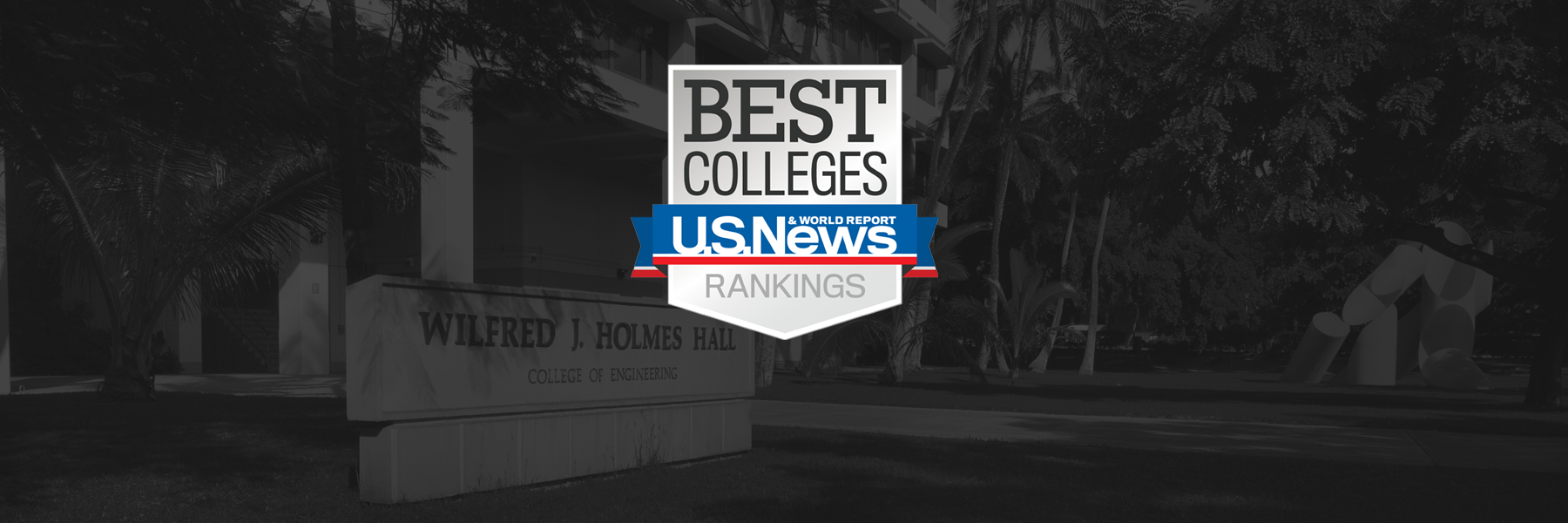
New scholarship provided by real-life MacGyver
Imagine working as an engineer overseas, monitoring the installation of water supply systems, when suddenly, the local army decides to seize power, successfully conducting a very violent coup’detat. The King, Crown Prince, and Prime Minister are all dead. People are being tortured to death and dragged through the streets at random. Meanwhile, you must travel 250 miles to get to your apartment, so you can get your passport, and then travel another 250 miles to your embassy—all while being closely scrutinized and threatened by suspicious soldiers at the dozens of checkpoints along the way. This is what Wayne Rickerd experienced in 1958, while working in Iraq. After several close calls with some rather nervous and heavily armed soldiers, Wayne and his colleagues managed to safely return to their home countries.
Almost ten years after that harrowing experience, Wayne found himself enjoying Honolulu and the best experience of his professional life—working on a study for a new reef runway at the Honolulu International Airport (HIA). However, opposition from the U.S. Air Force brought the project to a standstill. Because the Air Force’s Hickam base is adjacent to HIA and they would be a user of the proposed reef runway, their input was critical. The Air Force opposed the design because it did not include a 1,000-foot safety zone on each side of the runway for emergency landings and aborted take-offs.
After considerable doodling and calculating, Wayne soon began to realize that the only way to meet the Air Force’s criteria was to lower the runway and construct a breakwater 1,000 feet on the ocean side of the runway. He knew that the top of the breakwater could be at a lower elevation than the seaward edge of shoulder of the runway, as the waves could overtop the breakwater and dissipate in the safety zone during storms without effecting the operations on the runway; whereas, the splash caused by waves breaking over the shoulder of the runway would effect the operational capacity of HIA. Hence, he concluded after cursory review that the cost of a breakwater located 1,000 feet seaward would be about the same cost as the revetment required on the edge of the runway shoulder as proposed in the original study report. Eureka! Wayne had found a solution that satisfied everyone.
Wayne went on to help other challenging projects across the country, but he always appreciated his time in Hawai’i. A shining example of Oklahoma’s finest, Wayne demonstrated the Aloha Spirit. When he rose to an executive position, he invited everyone who worked for him to write anonymous evaluations on him—it didn’t matter if they were a janitor, an ironworker, or a secretary. He was humble and valued everyone.
On September 18, 2022, Wayne Rickerd passed away at his home in Las Vegas at the age of 94. On what would’ve been his 95th birthday, his family used their knowledge of the currents to scatter his ashes at a place where they would drift towards Diamond Head, catch the current, and head towards the airport.
To demonstrate his appreciation for Hawai’i and its people, Wayne and his family have gifted $100,000 to the University of Hawai’i to establish the Wayne Rickerd Engineering Endowed Scholarship, which will provide two scholarships to be awarded annually to UH engineering students.


